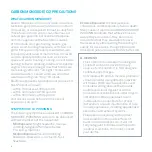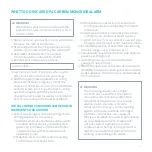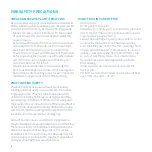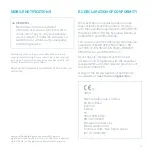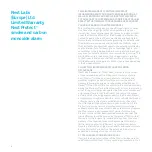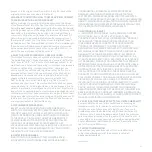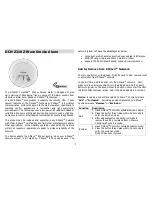
27
WARNING
Actuation of your CO alarm indicates the
presence of carbon monoxide (CO), which
can KILL YOU.
1. Keep calm and open all doors and windows to
increase the rate of ventilation.
2. Stop using all fuel-burning appliances and
ensure, if possible, that they are turned off.
3. Evacuate the premises if the carbon
monoxide alarm continues to sound.
4. Contact your emergency services.
5. Get medical help for anyone suffering the
effects of carbon monoxide poisoning.
6. Call the appropriate appliance servicing
and/or maintenance agency so that the
source of the CO emissions can be identified
and corrected. Do not use the fuel-burning
appliances again until they have been
checked and cleared for use by a competent
person, according to national regulations.
THE FOLLOWING CONDITIONS CAN RESULT IN
TRANSIENT CO SITUATIONS
1. Excessive spillage or reverse venting of fuel-
burning appliances caused by:
I) Outdoor ambient conditions such as wind
direction and/or velocity, including high
gusts of wind; heavy air in the vent pipes
(cold/humid air with extended periods
between cycles).
II) Negative pressure differential resulting
from the use of exhaust fans.
PHONE NUMBER:
WHAT TO DO IN CASE OF A CARBON MONOXIDE ALARM
III) Simultaneous operation of several fuel-
burning appliances competing for limited
internal air.
IV) Vent pipe connection vibrating loose from
clothes dryers, boilers or water heaters.
V) Obstructions in, or unconventional vent pipe
designs, which amplify the situations above.
2. Extended operation of unvented fuel-burning
devices (range, oven, fireplace, etc.).
3. Temperature inversions that can trap exhaust
gases near the ground.
4. Car idling in an open or closed attached
garage, or near a home.
5. NEVER bring a charcoal barbecue inside, and
ALWAYS operate a portable generator outside,
a safe distance from the house, and well away
from windows.
WARNING
The following substances in high
concentration can affect the carbon
monoxide sensor and may affect the
reliability of the alarm or cause false
alarms: paint, thinners, solvents,
adhesives, hair sprays, some cleaning
agents, ammonia, acetone, hydrogen
methane, iso-butane, iso-propanol,
ethylene, benzene, toluene, ethyl acetate,
alcohol-based products, volatile oils,
silicone vapour, hydrogen sulphide,
sulphuric acid, hair-grooming products,
high concentrations of dust and oil mist,
soaking or splashing with water.
Summary of Contents for S3003LWES
Page 32: ...A13 64 10 0036 GB A ...














